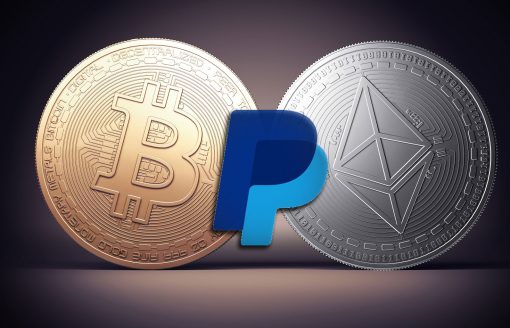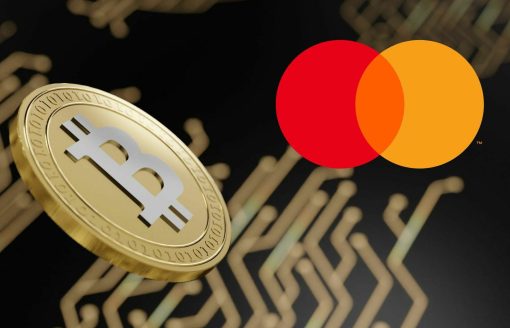Digital Asset Treasuries (DATs) — tokenized U.S. Treasuries and money funds — are moving from pilot projects to CFO toolkits. Alongside Bitcoin ETFs, DATs are forcing companies, and institutions like BlackRock and Vanguard, to rethink treasury strategy.
Stay in the know on crypto by frequently visiting Crypto News Today
Why This Is Happening Now
Three forces converged in 2024–2025:
- Accounting clarity. The FASB’s ASU 2023-08 lets companies carry in-scope crypto at fair value, with gains/losses flowing through earnings. This change removes the P&L penalty that once discouraged Bitcoin holdings. Tesla’s recent disclosures showed how fair-value reporting now works.
- Access via ETFs. Spot Bitcoin ETFs opened the floodgates. BlackRock’s IBIT is the category leader, while Fidelity’s FBTC has become another heavyweight. Together, U.S. spot ETFs now hold well over a million BTC. For treasurers, ETFs provide compliance-friendly wrappers for an asset once considered off-limits.
- On-chain Treasuries — now DATs. Instead of waiting for banking hours, Digital Asset Treasuries (DATs) put T-bills and money-market fund shares on blockchain rails. DATs settle instantly, operate 24/7, and can be programmed as collateral or payments infrastructure. BlackRock’s BUIDL fund and Franklin Templeton’s tokenized Government Money Fund are already pulling institutional dollars. BNY Mellon and Goldman Sachs have added tokenized MMF share classes into LiquidityDirect, signaling Wall Street’s buy-in.
📌 Sidebar: What Are Digital Asset Treasuries (DATs)?
DATs are tokenized versions of U.S. Treasuries, money-market funds, or other government-backed securities that live on blockchain networks.
- They maintain the safety and yield profile of traditional Treasuries.
- They add 24/7 liquidity and programmable settlement.
- They are composable with digital finance (DeFi, stablecoins, cross-border payments).
In short: DATs take the most trusted asset in global finance — Treasuries — and make them run on crypto rails.
Bitcoin on the Balance Sheet: From Outlier to Playbook Option
MicroStrategy remains the poster child, calling BTC its “primary treasury reserve asset.” But new names are breaking ground: in 2025, GameStop revealed it had purchased 4,710 BTC (~$500M) for its treasury.
Meanwhile, ETF vehicles are industrializing access. IBIT alone sits at tens of billions AUM, and the total spot ETF complex holds ~1.25M BTC. For corporate CFOs, that signals Bitcoin has durable institutional plumbing — not just hype.
CryptoCaster Quick Check:
BlackRock and Vanguard: A Study in Contrasts
- BlackRock has embraced both fronts: spot Bitcoin exposure (IBIT) and DATs (BUIDL). This dual play cements its role as the central node in digital asset adoption.
- Vanguard, by contrast, has refused to support Bitcoin ETFs on its brokerage platform, sticking to its conservative philosophy. The divergence matters: some boards may face platform limitations depending on custodian choice.
- Fidelity has taken the middle path — its FBTC ranks among the top ETFs by flows — further normalizing BTC and DATs in corporate and institutional conversations.
DATs: Cash Management Goes 24/7
The Digital Asset Treasuries (DATs) market has surged past $7B outstanding, led by BlackRock, Franklin Templeton, Ondo Finance, and others.
DATs are pitched as “digital cash equivalents.” They:
- Compress settlement cycles from days to seconds.
- Enable real-time treasury sweeps across time zones.
- Function as high-quality collateral in repo, credit lines, and even intercompany transfers.
Importantly, they are no longer experimental. BNY Mellon + Goldman Sachs built DAT rails into LiquidityDirect — a standard institutional cash platform. This places DATs directly into workflows corporate treasurers already use.
And there’s a second-order effect: stablecoins, backed largely by T-bills, are becoming a structural demand source for the short end of the Treasury curve. Treasury officials are beginning to acknowledge this link.
Where the Capital Comes From
When headlines announce that a corporation or asset manager has purchased “hundreds of millions” in digital assets, the natural question is: whose money is it?
- Corporates (Tesla, MicroStrategy, GameStop): Companies use excess balance-sheet cash or issue debt instruments (like MicroStrategy’s convertible senior notes) to fund BTC buys. Tesla’s $1.5B allocation in 2021 came straight from surplus liquidity. These are strategic reallocations, not venture-style capital raises.
- ETFs and Funds (BlackRock, Fidelity, Franklin): Asset managers almost never deploy their own treasury. Instead, they aggregate client capital through ETFs or tokenized funds. For example, when investors buy into BlackRock’s IBIT, authorized participants acquire the Bitcoin that backs new ETF shares. With DATs, funds like BUIDL tokenize investor allocations to Treasuries. The “bulk buy” reflects investor inflows, not the manager’s own wallet.
- Large Allocators (pensions, sovereign wealth funds, endowments): With trillions under management, even a small percentage shift (0.5% into digital assets) equates to billions in flows. These allocators typically enter via ETF shares, DATs, or separately managed accounts.
The key: large digital asset purchases are almost always structured flows of investor money, debt proceeds, or treasury reallocations. That distinction matters for understanding why these moves can scale so quickly.
What This Means for Corporate Treasurers
Portfolio construction:
- Strategic reserve: Small allocations to Bitcoin (via ETF or direct) now have accounting clarity and ETF access.
- Operating liquidity: DATs provide 24/7 settlement, programmable collateral, and real-time treasury dashboards.
Payments and working capital:
- Stablecoins (e.g., USDC, PYUSD) are increasingly viable for cross-border payouts, payroll in emerging markets, and e-commerce.
Financial reporting:
- With fair-value accounting now required, CFOs can show the true impact of BTC/DAT holdings. The flip side: volatility shows up on earnings, demanding stronger risk disclosure.
Risks and Governance — What Boards Will Ask
- Volatility & Drawdowns: BTC is liquid but volatile. DATs reduce volatility but require policy guardrails.
- Custody & Controls: Segregation of duties, SOC-audited providers, and chain-level restrictions are critical for DATs.
- Regulatory Drift: Stablecoin and DAT regulations are still evolving. Treasurers must plan for shifting rules around eligibility, disclosure, and reporting.
A CFO Playbook for DATs and BTC
- Update policy: Explicitly authorize BTC (via ETF or direct) and DATs (via approved platforms).
- Choose rails wisely: Custodian/platform matters — e.g., Vanguard brokerage won’t support BTC ETFs.
- Pilot DATs: Start with a small allocation (tokenized MMF shares) to test 24/7 settlement and collateral.
- Align accounting: Integrate fair-value rules (ASU 2023-08) into quarterly reporting and MD&A.
Bottom Line
The convergence of fair-value accounting, spot Bitcoin ETFs, and Digital Asset Treasuries (DATs) has pulled digital assets out of the fringe and into mainstream treasury practice.
BlackRock is setting the pace, Fidelity is running close, and Vanguard is holding the conservative line. Meanwhile, Wall Street’s plumbing (BNY, Goldman, JPMorgan) is embedding DATs into the system.
For CFOs, the strategic question is no longer whether to engage with digital assets, but where, how much, and under what controls.
If this article brought you clarity, insight, or value—support the work that made it possible.
At CryptoCaster, we report on Web3, crypto markets, and institutional finance with no billionaire owners, no shareholders, and no hidden agenda. While mainstream media bends toward Elon Musk, BlackRock, and JPMorgan narratives, we stay focused on what matters: truth, transparency, and the public interest.
We don’t just cover the headlines—we investigate the power structures behind them. From FTX and Ripple to the quiet push for CBDCs, we bring fearless reporting that isn’t filtered by corporate interests.
CryptoCaster is 100% paywall-free. Always has been. To keep it that way, we depend on readers like you.
If you believe independent crypto journalism matters, please contribute—starting at just $1 in Bitcoin or Ether. Wallet addresses are below.
Your support keeps us free, bold, and accountable to no one but you.
Thank you,
Kristin Steinbeck
Editor, CryptoCaster
Support CryptoCaster: The Unfolding of Money
At CryptoCaster.world, we’re dedicated to bold journalism, sharp insights, and fearless commentary across blockchain, Web3, and crypto markets. Your **Bitcoin contributions** help us stay independent and continue delivering signal over noise.
🚨 CryptoCaster does not offer investment advice. Always DYOR—volatility is real, and risk tolerance matters.
Support our mission. Contribute BTC today.
🔗 Bitcoin Address:
3NM7AAdxxaJ7jUhZ2nyfgcheWkrquvCzRm
Thank you for backing our journalistic lens as we chronicle the Unfolding of Money — a saga still being written in real time.![]()
CRYPTOCASTER HEATMAP








